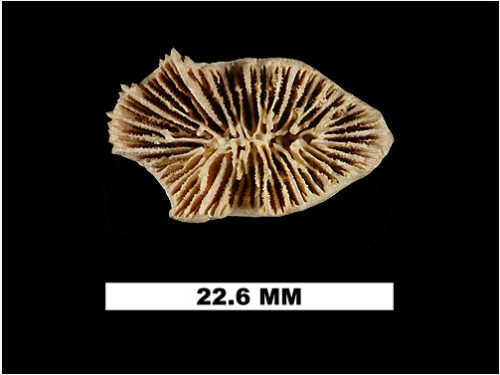
This week’s Fossil Friday feature is the fossilized corallum, or coral skeleton, of a coral (Phylum Cnidaria, Class Anthozoa) called Flabellum. The fossil in the photograph is from Florida, but a specimen identified as Flabellum sp. (UF 222226) has been recovered in Panama from the Gatún Formation and is middle-late Miocene in age.

Flabellids (Family Flabellidae) are solitary corals, meaning that they consist of only one polyp with a mouth surrounded by tentacles (colonial corals are made up of several polyps). They are found from the Early Cretaceous up into the present-day. Today, they can be found worldwide.
Reference:
Cairns, Stephen D. 2002. Flabellidae . Version 28 October 2002. http://tolweb.org/Flabellidae/19103/2002.10.28 in The Tree of Life Web Project, http://tolweb.org/